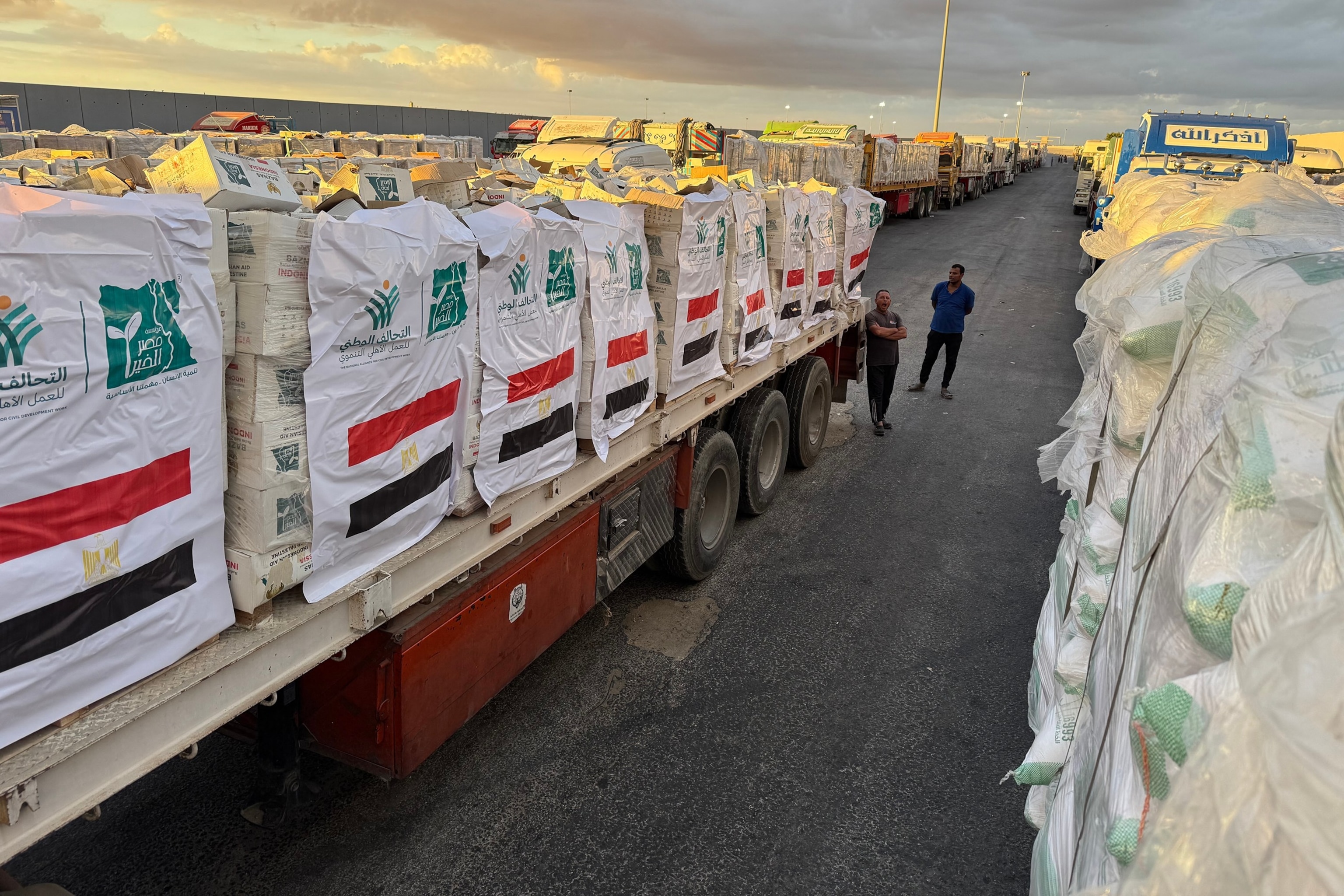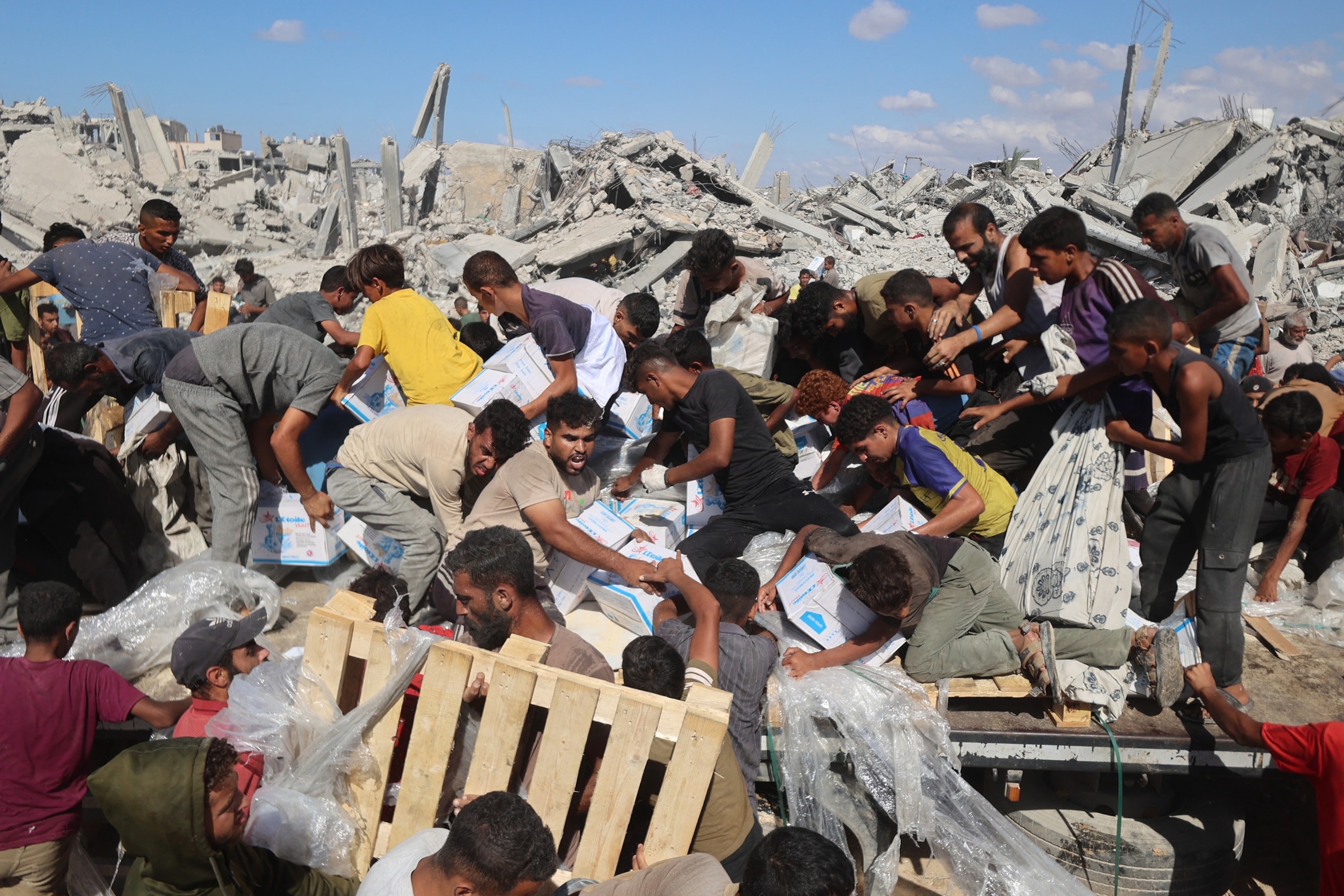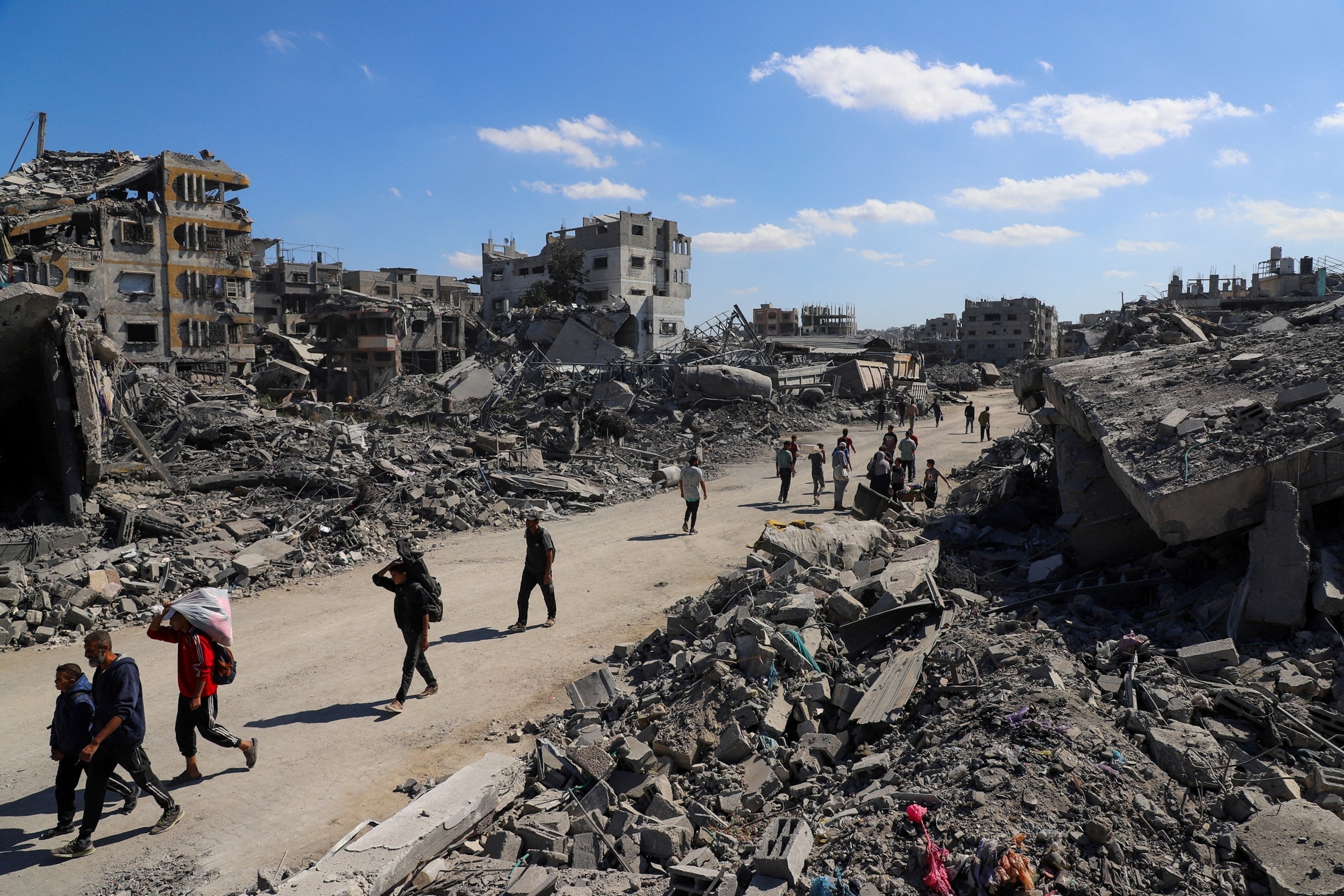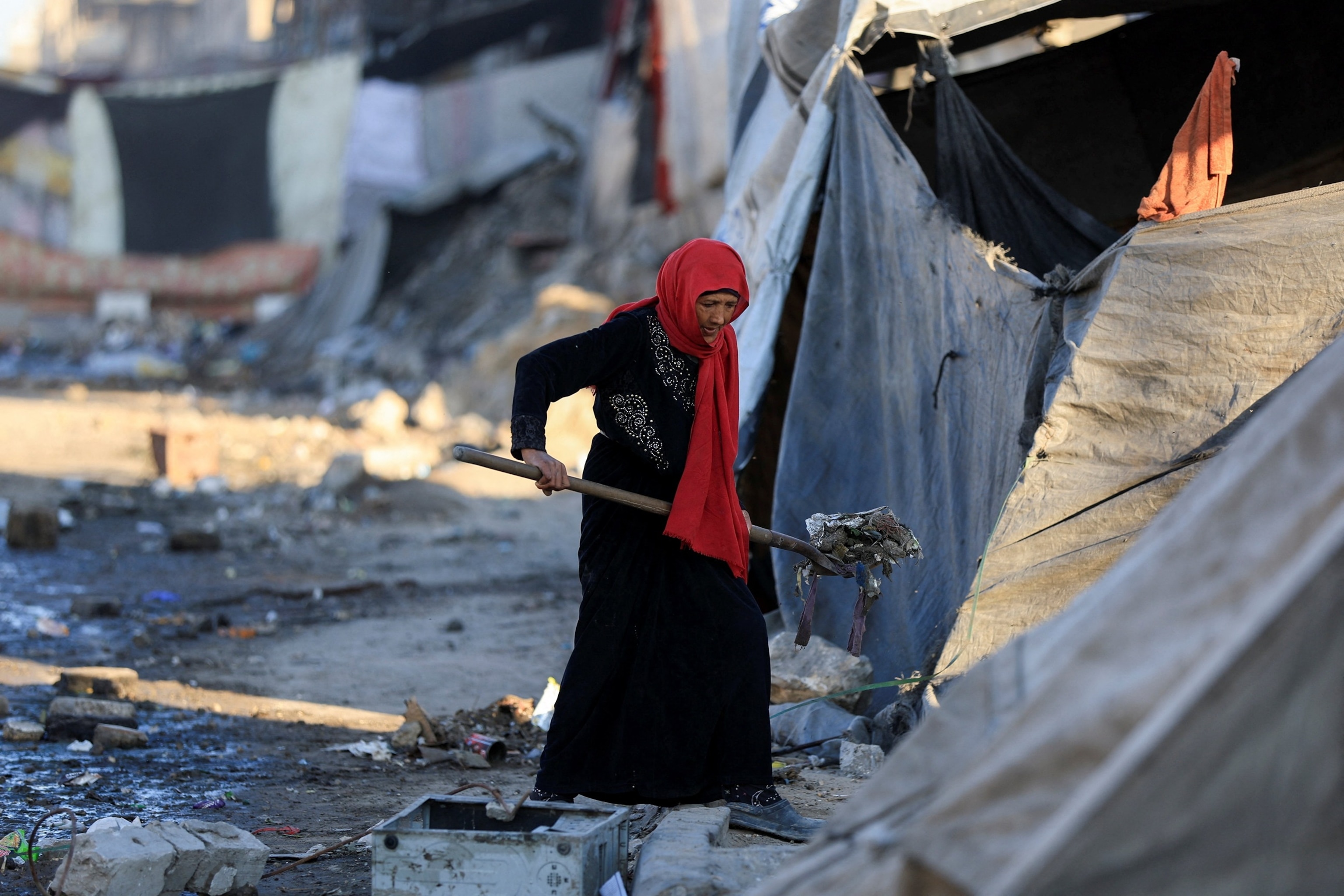Dozens of humanitarian organizations have begun to rapidly ramp up their operations in hopes of once again delivering aid to Gaza amid the ceasefire between Israel and Hamas.
Items in Gaza, including food, drinking water, medicine and hygiene products, are running out, organizations say. Additionally, hundreds of thousands of families have been displaced, many of whom live in tents in heavily populated areas.
Aid workers told ABC News they will face several challenges delivering aid to Gaza. Israeli authorities have limited the amount of aid that can enter the strip, and destroyed roads and neighborhoods make access to areas of the enclave difficult.
Additionally, winter is quickly approaching and aid workers say they have limited time to deliver supplies to help Palestinians in Gaza get through the months of cold weather.
“We are not asking for anything unreasonable. We are asking for the volume of aid that came into the Gaza Strip before the escalation in October 2023,” Tess Ingram, UNICEF communications manager, told ABC News. “I think that’s something to pay attention to in the coming days. Is aid flowing? Are the crossings open? Is the UN empowered to do its job, to serve the children of Gaza? … But the other part is, is the ceasefire holding? There’s a lot at stake right now, so the ceasefire has to hold.”
Lifting restrictions on aid
He the UN said That Sunday, October 12, was the first day that progress was observed in expanding humanitarian aid deliveries to Gaza.
According to the UN, hundreds of thousands of hot meals and bread packets were distributed in the north and south. In addition, cooking gas, as well as tents, frozen meat, fresh fruit, flour and medicines, entered the zone for the first time since March, the UN said.

Trucks loaded with humanitarian aid are parked on the Egyptian side of the Rafah crossing, waiting to access the Gaza Strip, on October 12, 2025.
AFP via Getty Images
However, no trucks entered Gaza on Monday due to the transfer of Israeli hostages, and border crossings were also closed on Tuesday due to the Jewish religious holiday of Shemini Atzeret and Simchat Torah.
Israeli officials announced Tuesday that they would not reopen the Rafah crossing on the border with Egypt and would limit aid entry into Gaza after Hamas failed to return all the bodies of deceased hostages, as called for in the ceasefire agreement.
“Starting tomorrow, only half of the agreed number of trucks (300 trucks) will be allowed to enter, and all of them will belong to the UN and humanitarian NGOs, with no participation from the private sector,” COGAT, the Israeli defense body in charge of coordinating aid to Gaza, said in a statement. “No fuel or gas will be allowed into the Strip, except for specific needs related to humanitarian infrastructure.”
Hamas said the debris makes it a logistical challenge to locate the bodies of the deceased hostages, but Israel said it believes Hamas knows where the hostages’ bodies are and is intentionally delaying their return.
Jolien Veldwijk, national director of CARE Palestine, said the number of trucks entering Gaza is just “a trickle” of what is needed to meet the needs of the population.
“The destruction is significantly worse than seven or eight months ago,” he told ABC News, compared to the first ceasefire when he was also in Gaza.
Multiple organizations, including CARE, said they have not been able to get aid to Gaza since March 2, when Israel imposed a complete blockade. — in an effort to pressure Hamas to release the remaining hostages. — which lasted 11 weeks.
The organization said Israeli authorities had denied its repeated requests to deliver aid. Veldwijk said supplies are currently stuck in warehouses in Egypt and Jordan.
Similarly, James Hoobler, Oxfam America’s humanitarian policy advisor, told ABC News that the group has had 4,000 food packages and a large volume of essential water hygiene and sanitation equipment stuck in its warehouse in Amman, Jordan, since March.
Some organizations say they also encounter bureaucracy when trying to access the slot.
“Now we are running out of supplies,” Veldwijk said of the CARE team in Gaza. “We can’t bring anything in yet… We’re desperate to get our supplies, but we’re also desperate for all the border crossings to open.”
UNICEF’s Ingram, who is currently in Gaza, said limiting the volume of aid coming into the strip is the opposite of what is needed, but that UNICEF has had some success in its operations on the ground since the ceasefire went into effect.
“We can move much more freely and have access to areas we haven’t been able to get to for a while,” he told ABC News. “We no longer have to coordinate our movements with the Israeli authorities, which means we do not face delays or denials.”
She continued: “So, for example, the last three days I was in and around Gaza City, and that was the first time in a long time that we were able to get to parts of Gaza City that were the focus of that intense bombing in August and September, and really get a sense of how that has affected the area and how people plan to live there again, and what they need.”
Reconstruction of water systems
Aid workers told ABC News that rebuilding water networks will be critical in the reconstruction effort in Gaza, but comes with many logistical challenges.
Aid workers said the water coming from the ground in Gaza is very salty due to years of degradation. Drinking water needs to be desalinated, which is achieved through desalination plants across Gaza, aid workers say.

Palestinians collect aid packages from aid trucks that entered through the Karem Abu Salem crossing in Khan Yunis, southern Gaza Strip, on October 12, 2025.
Omar Al-qattaa/AFP via Getty Images
“There’s a lot of work that needs to be done to make sure they’re all working properly.” Ingram said. “There are some that are out of service. Therefore, work needs to be done to ensure that the production of drinking water increases.”
The network of pipes that brought water to homes has been largely destroyed, so most people in Gaza receive their water from tanker trucks, which collect drinking water from desalination plants and distribute it throughout the strip.
Ingram said the trucks have suffered wear and tear, which may limit their ability to deliver water as water networks and wells are rehabilitated.
“The tankers themselves are a limited fleet that has spent two years in a war zone over debris,” he said. “They need maintenance and repairs.”
Aid workers say there are many groundwater wells, which pump domestic water that people use for cooking, cleaning and showering, many of which need repairs.
Veldwijk said CARE has rehabilitated water networks in the past to bring drinking water and domestic water to people’s homes to supplement water supplied by trucks, but some have been destroyed and need to be rebuilt.
He said the group is also working to rehabilitate wells and desalination units.
Aid workers added that rebuilding sanitation networks is also necessary, but will be a challenge until necessary supplies entering Gaza increase.
“I went to a large sewage dam in Gaza City, which is surrounded by a residential area and is at risk of flooding because the pumps are not working,” Ingram said. “Sanitation poses a huge risk of disease if we don’t control it. So we need to really improve the systems that remove solid waste, that deal with sewage and sewage.”
Debris clearance and road reconstruction
The destruction across Gaza also presents a logistical challenge in delivering aid to civilians. Many roads have been destroyed and unexploded ordnance may be found in the rubble.
Zaheer Kham, global director of fundraising at the humanitarian charity Human Appeal, told ABC News that on Tuesday he received a message from teams on the ground in Gaza that debris was beginning to be cleared from the roads.
“Is it enough? Of course not, we need heavy machinery to remove road debris that has been piling up for two years,” he told ABC News.

Palestinians walk through the rubble of destroyed buildings, amid a ceasefire between Israel and Hamas, in Gaza City, October 14, 2025.
Ebrahim hajjja/Reuters
Veldwijk said that the roads that are being destroyed make it difficult to travel from southern Gaza to central Gaza and northern Gaza and that if all border crossings are opened, supplies can be channeled more easily throughout Gaza.
Aid workers say entire sections of Gaza have been destroyed, making it difficult to find people who may need help.
“It’s like being inside the skeleton of a city,” Ingram said of visiting neighborhoods in Gaza City and Jabalia, just north of Gaza City. “Everything is gray. The things that would normally tell you where you are have disappeared and it’s very disorienting.”
On Tuesday, the United Nations Development Program announced that the cost of rebuilding Gaza is estimated at around $70 billion, of which $20 billion will be needed in the next three years alone.
Winter season is fast approaching
With the cold months approaching, humanitarian organizations say there is an urgent need to bring warm clothing and blankets to Gaza.
Winters in Gaza are usually not very severe, with low temperatures usually hovering around 40 degrees F, but heavy rain and its seaside location can make it seem colder.
“It really is a race against time,” said Oxfam America’s Hoobler. “Winterization is a major issue, especially with the amount of housing destruction we’ve seen. So we know that people are in very crowded conditions there. They don’t have adequate shelter. Many of the makeshift shelters that people were in were destroyed by shelling.”
Nine out of 10 homes have been damaged or destroyed in Gaza, meaning some people sleep in homes with missing walls or roofs while others sleep in tents, according to Ingram, increasing the need for mattresses, blankets and other supplies.
Ingram said that last winter, some children, including infants, died from hypothermia, which she said can be prevented with the right supplies.

A Palestinian woman cleans an area next to tents, amid a ceasefire between Israel and Hamas, in Gaza City, October 14, 2025.
Dawoud both cravings/Reuters
He added that he is concerned that many children in Gaza have only one or two sets of clothing, many of which are not warm enough for the winter months.
“Our goal is to provide every child under the age of 10 in the Gaza Strip with a new set of winter clothing during the ceasefire and a new pair of shoes,” Ingram said. “That goal depends largely on the volume of aid reaching the Gaza Strip, so we remain hopeful, but we call on both sides in the conflict to respect the terms of the ceasefire.”




